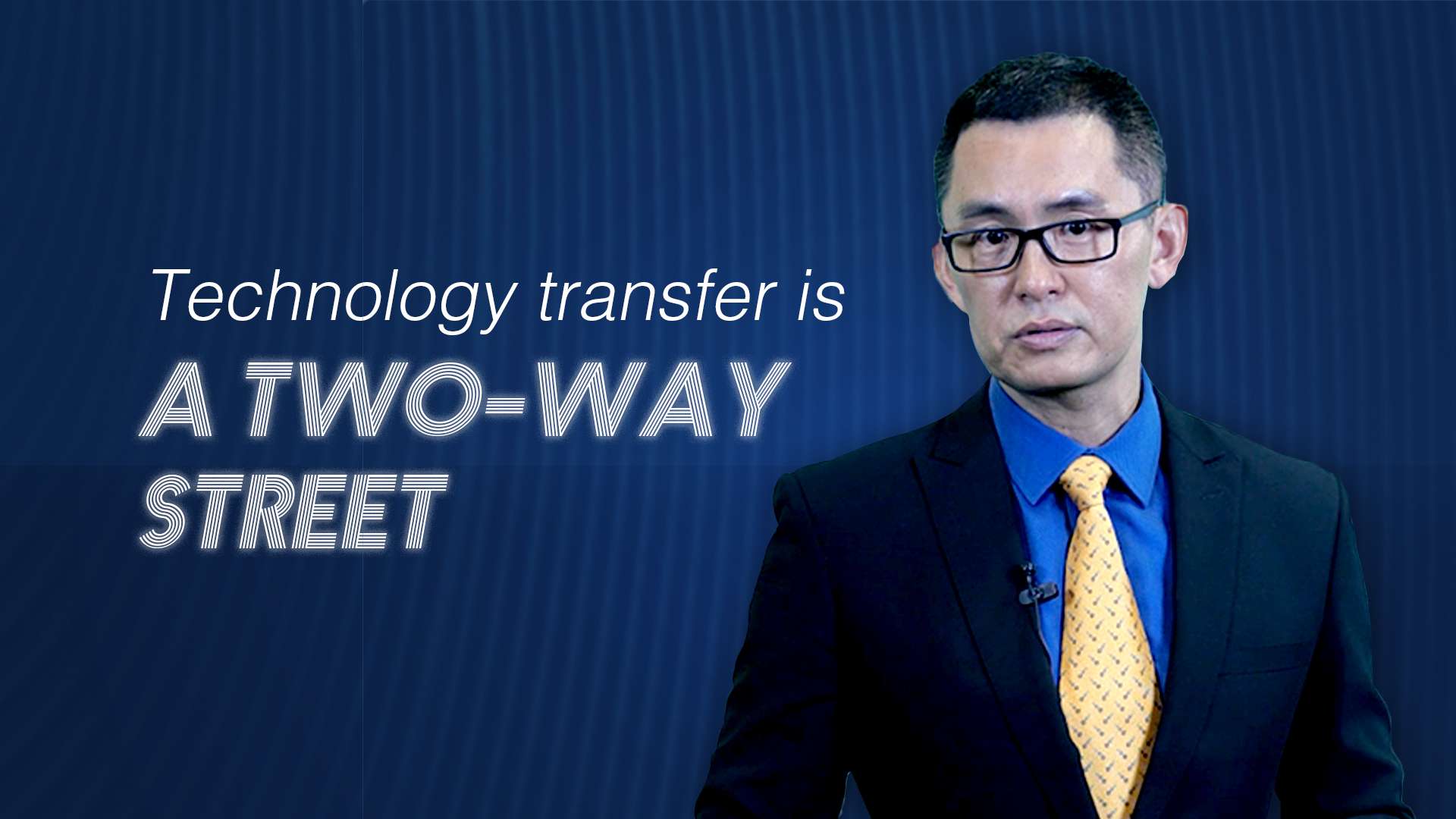
Opinions
21:20, 08-Oct-2018
Technology transfer is a two-way street
Updated
21:11, 11-Oct-2018
Zou Yue
04:41

The story starts with a vegetable – the humble celery.
Chinese farmers in the south have long used celery seeds to treat epilepsy. But a small pharma company in northern China has extracted a chemical from celery oil – known as butylphthalide or simply NBP – and turned it into a real medicine. It made a huge difference for those who suffered strokes.
The key is that the compound can get through the blood-brain barrier, while most molecules can't. Once inside, it strengthens blood circulation and protects mitochondria, the energy machine of our body. NBP has proven to be effective in 78 percent of patients who had suffered blood blockage in brains.
"Nobody believed that we could produce new patented drugs like NBP. For five years, we have been losing money. That is a big challenge. But looking back, that is how we made our way here, by overcoming challenges," said Lu Lijun, executive vice president of CSPC Pharmaceutical Group Limited.
In 2017, NBP sales soared to 3.5 billion yuan (540 million US dollars) and it is now going through the approval process of the US Food and Drug Administration (FDA).
"It is costly to enter the US market. But we are confident about our technology. It has treated millions of Chinese and it can do more in the US," said Dr. Li Chunlei, CSPC's executive president and also chief scientist in charge of research and development.
Nobody can steal its way to wealth. The story of CSPC is a telling chapter of how Chinese people invent and use technology.
In the past four decades, the company has developed 200 categories of medicine treating diabetes, strokes, hypertension, infection and tumors. And the list goes on – eight Chinese drug companies were applying for approval from FDA in 2017. Their ambition is to treat more people around the world.
From semiconductors to software, and dumpsters to data, technologies have traveled to China. But it is a marriage of free wills, not an abduction of unwilling partners. China spent 28 billion US dollars in buying licensed patents in 2017 – that's 15 times more than 2001 when it joined the World Trade Organization (WTO). And the US patent owners are the biggest beneficiaries.
Technology comes and goes. You may think China is mostly a receiver. Wrong! China also gives back. Patents awarded to international firms saw a 40-percent surge between 2012 and 2016. Guess who gets the most? The US. America is the largest recipient of Chinese patents. The number has doubled in five years. In 2017, revenue from patent export from China was 4.8 billion US dollars, a three-time jump year on year.
The diffusion of knowledge is an organic process. It encourages taking the lead, but also allows catching up. If China was a toddler in 1978, it became a teenager when it joined the WTO in 2001. And as any young life, China learned from others, and fast. Sometimes it makes mistakes, but it is always trying to do the right thing.
Now China has grown up and became a young adult. It started to work and pay back – that should be a new land of promises for itself and the world.
In Chinese, we say 恩人者圣,自恩者愿 – To benefit yourself is human, to benefit others is divine. The story of technology is always one of benefiting ourselves and others.
Scriptwriter: Zou Yue
Animation consultant: Luo Qing
Animation director: Hu Dacheng, Kong Qinjing
Animation & Editing: Wang Pengbo, Shen Siyu
Video Photographer: Li Jingjing

SITEMAP
Copyright © 2018 CGTN. Beijing ICP prepared NO.16065310-3
Copyright © 2018 CGTN. Beijing ICP prepared NO.16065310-3